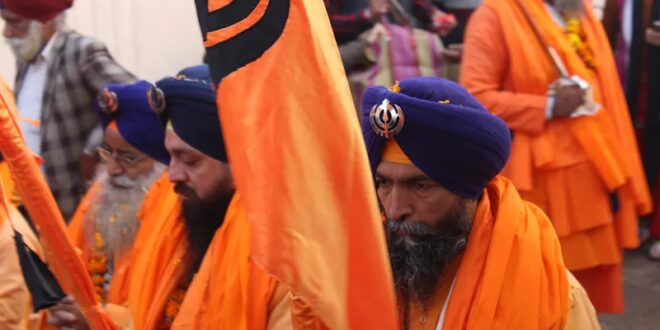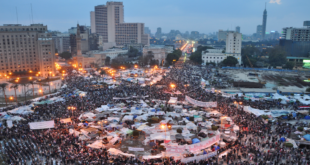Another frenetic cycle has ended, not with a bang, but a whimper. There is a pattern here: every few months – sometimes less – Indian authorities drum up hysteria about a new and imminent catastrophe that, we are led to believe, the Khalistanis are preparing to inflict on the evidently fragile Indian state. Each time around, little happens. However, very quickly, another edition of the same frenetic cycle is repeated. Is it, indeed, the case that Indian intelligence is invariably so far off the mark? Or are we witness to nothing more than cynical political manipulation?
In the wake of the deaths of three prominent Khalistani activists over just 45 days between May 6 and June 18, 2023, wild claims have been made both by the Khalistanis and Hindutva nationalists that these – including the death in a Birmingham Hospital, apparently by cancer, of Avtar Singh Khanda, on June 15, 2023 – were ‘hits’ by India’s external intelligence agency, the Research and Analysis Wing (R&AW). Interestingly, the Khalistan Freedom Rally on July 8 focused on the killing of Hardeep Singh Nijjar alone, surprisingly leaving out Khanda and Paramjit Singh Panjawar. Panjwar was gunned down in Lahore, Pakistan, on May 6, 2023, while Nijjar was killed outside the Nanak Sikh Gurudwara in Surrey, of which he was President, on June 18.
The Khalistan Freedom Rally was announced through near-identical posters in Canada, the United Kingdom (UK), United States and Australia, with the difference that, in each country, the photographs of the diplomats labelled ‘Shaheed Nijjar’s killers’ were changed to include the heads and deputy chiefs of mission in each country. Garish, violent, images and the slogan, “Kill India”, featured prominently in the announcements.
There has been an electronic and social media storm in India since the announcement, with dire assessments of the resurgence of the Khalistan movement among the global Sikh Diaspora. The Indian diplomatic response was also uncharacteristically vigorous, perhaps in view of the arson attack at the San Francisco Consulate on July 2.
Minister for External Affairs, S. Jaishankar stated on July 6, 2023, “The issue of these posters is very serious. It involves inciting violence against our diplomats, Embassies, and Consulates, along with issuing threats.” Further, he singled out Canada, noting, “we have seen statements from Prime Minister Trudeau. However, the issue is not about freedom of expression; the issue is of its misuse, which provides an opportunity for terrorist elements or separatist elements to thrive and gain support.” Indeed, it is questionable whether the contents of the posters for the Khalistan Freedom Rally would come under freedom of speech protection, given the specific targeting of named Indian diplomats, the false charges of murder against them and the exhortation alongside to “Kill India.”.
The eventual response to the Khalistan Freedom Rally was strikingly underwhelming. With the exception of a car rally from Walton to Surrey in Canada, comprising over a hundred vehicles, the demonstrations were limited to no more than a few scores of individuals at each venue. The Walton-Surrey cavalcade also appears to have produced little more than a single participant per vehicle, with a fairly tiny gatherings eventually protesting outside the Indian Consulate at Vancouver and the High Commission at Toronto. The gathering outside the Indian Embassy at Melbourne was estimated, at peak, by local eyewitnesses at under 150 protestors, matched by a comparable number of Indian flag-waving opponents across the street. The London and San Francisco rallies were comparable – possibly smaller. The reality that the Khalistanis among the Sikh Diaspora are a mere nuisance, rather than a major threat, was more than evident.
It is useful to recall here that The Bloom Review, published in the UK on April 26, 2023, emphasised the incitement of violence and engagement in intimidation was essentially limited to a small but extremely vocal group who were “hijacking” the Sikh faith and pushing a subversive pro-Khalistan narrative. The Review described the pro-Khalistan minority of British Sikhs as “aggressive, subversive and sectarian” and mentioned that there were possible overlaps between terrorist groups and current Sikh political groups in the UK. The descriptive applies substantially to Khalistani groups in other countries as well, where they tend to exercise far greater influence than their numbers could justify, principally as a result of their aggression and violent suppression of voices that do not accept their distorted creed.
Nevertheless, the violence and stridency of the discourse on the Indian electronic media and the wider social media need separate explanation. The coarseness of the exchanges on social media are often simply dismissed as the nature of the beast, but this is not so. The discourse is being fed; the frenzies are coordinated, orchestrated. Prominent media houses receive regular feeds of evident plants that give direction to, and fuel the fire of, the abusive agitations of the choreographed anti-Khalistan campaigns in the social media. This would be understandable if there was a clear strategic direction in evidence, but these campaigns have, certainly since the London Referendum 2020 rally, only been counter-productive from an Indian perspective, giving increasing prominence to a minuscule Khalistani element in the Diaspora, and fuelling ever increasing excesses of language and, occasionally, action.
It is important to recognize that exaggerating the Khalistani threat serves extremists on both sides: the Khalistanis gain by securing attention and projecting an image far out of proportion to their actual capacities and support base, and this, in turn, helps Hindutva nationalists create anxieties about the ‘growing threat’ to national security and the ever-terrorised (albeit overwhelming) Hindu majority in India.
It is, moreover, clear that the language, idiom and imagery of the Khalistani Diaspora protests is gradually feeding into the Indian establishment’s interests, and is also contributing to the diminution of the global prestige of the larger Sikh community. Further, the more raucous and disruptive these elements in the Diaspora become, the more will this work to the advantage of the ruling establishment in India, particularly on three specific grounds:
The host nations will increasingly be forced to act against these elements and India will be able to exercise greater and more effective diplomatic pressure for action.
These disorderly movements feed perfectly into the Hindutva narrative.
By focusing the discourse on the Khalistanis, they help distract attention from the very real issues in Punjab, some of which had briefly come centre-stage during the farmers’ agitation. Henry Adams observed, in the early 20th Century, “Politics, as a practice, whatever its professions, has always been the systematic organization of hatreds.” This dictum has been unashamedly embraced with great enthusiasm by contemporary politicians across the world, prominently including the present Indian leadership. There are, nevertheless, implicit dangers here, both of over-reaction and under-reaction. The Indian state cannot be indifferent to the activities of the Khalistani Diaspora, especially since these have been increasingly associated with the activities of translational criminal gangs and in terrorist actions on Indian soil. On the other hand, any over-reaction, even through visible proxies in the media and organised trolls on social media, can only undermine the Indian state’s legitimacy standing in the international community. There is, however, evident conflict here between the interests of the state – which demand restraint and statesmanship – and the interests of the ruling party, which relies on an unconstrained polarizing discourse for political and electoral mobilization.
Of the four countries where mobilization for the Khalistan Freedom Rally was attempted on July 8, Canada presents the greatest and most persistent difficulties. There has been overwhelming and cumulative evidence – certainly since the intentionally botched run up to and investigations into the IC 182 Kanishka bombing of 1985, the largest terrorist incident in Canada till date, and the largest terrorist incident in the air until 9/11 – of extraordinary political leeway given to the Khalistanis in that country. This includes the persistent neglect of hate speech, open demonstrations of support to Khalistani terrorist groups banned in that country, the participation of leading politicians from the ruling and supporting parties in Khalistani events where such transgressions occur, and dogged foot-dragging by investigative and enforcement agencies in cases involving Khalistani transgressions. Vote bank politics and an alliance with the Jagmeet Singh-led New Democratic Party (NDP) underpin these divergences from civilized behaviour by the present regime led by Justin Trudeau, but these biases have a much deeper history. (Jagmeet Singh is a known Khalistan supporter and India baiter).
Two possible trajectories exist for the Punjabi, particularly Sikh Diaspora, especially in Canada. The first of these is that those who support and represent violent and criminalized Khalistani cabal will be voted out of key positions in Government, as well as in various religious institutions, particularly the Gurudwaras that remain under their control. On the other hand, the possibility of a progressive criminalization of those who oppose the Khalistanis also exists, potentially leading to an escalation of violent confrontations and gang wars in the host country. There are certainly many in Canada, as well as in other Western countries, who have begun to adopt the postures and language that the Khalistanis have, for decades, employed against them.
Western nations have long rued the snakes in others’ backyards. It is time they looked at the snakes in their own manicured gardens.
 Eurasia Press & News
Eurasia Press & News



